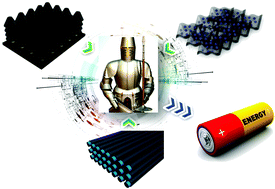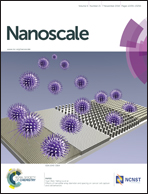Encapsulation of nanoscale metal oxides into an ultra-thin Ni matrix for superior Li-ion batteries: a versatile strategy†
Abstract
Li-ion batteries’ (LIBs) performance proves to be highly correlated with ionic and electrical transport kinetics in electrodes. Although continual progress has been achieved in rational design of ideal electrode systems, their energy density, cyclic endurance and productivity are still far from perfect for practical use. Herein we propose an interesting, facile and versatile strategy to encapsulate various nanoscale metal oxides (covering both nanopowders and nanostructured arrays) into an ultrathin Ni matrix (metal oxide@Ni) for superior LIBs. Evolutions of such metal oxide@Ni hybrids (taking MnO@Ni and CoO@Ni as models) are thoroughly studied by monitoring their whole fabrication process. Putting “armors” on nanoscale metal oxides is thought helpful for the promotion of the LIB performance since the outer Ni matrix provides both mechanical protection against huge volume changes and effective routes for electron transfer. As a proof-of-concept demonstration, all metal oxide@Ni hybrid electrodes exhibit drastic improvements in the capacity retention (e.g. ∼452% capacity rise for the MnO@Ni case while ∼551% for CoO@Ni NWs), long-term cyclic stability and rate capabilities. This designed strategy can be further extended to make other advanced oxide@metal hybrids, not only for LIBs but also for other potential fields.


 Please wait while we load your content...
Please wait while we load your content...